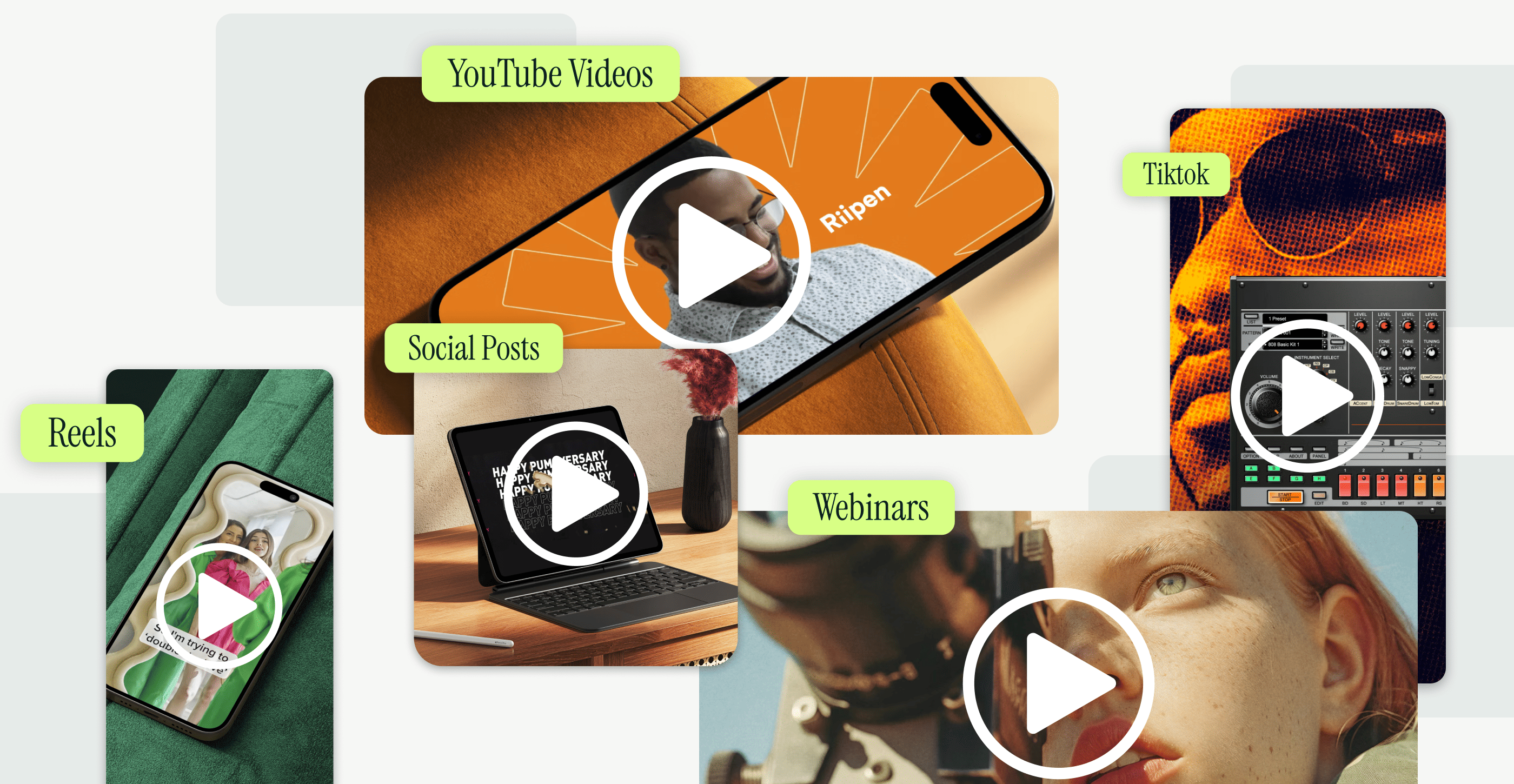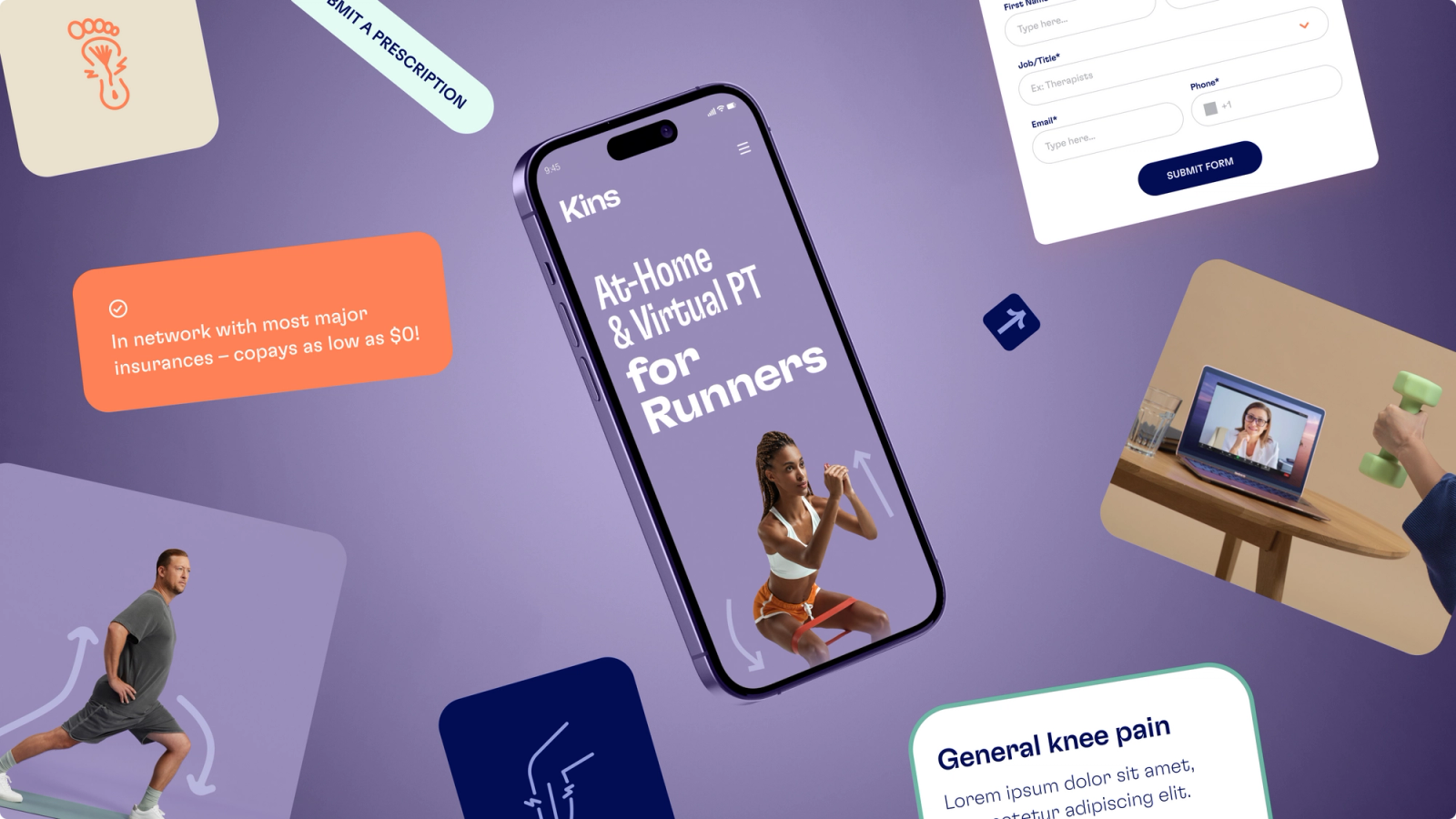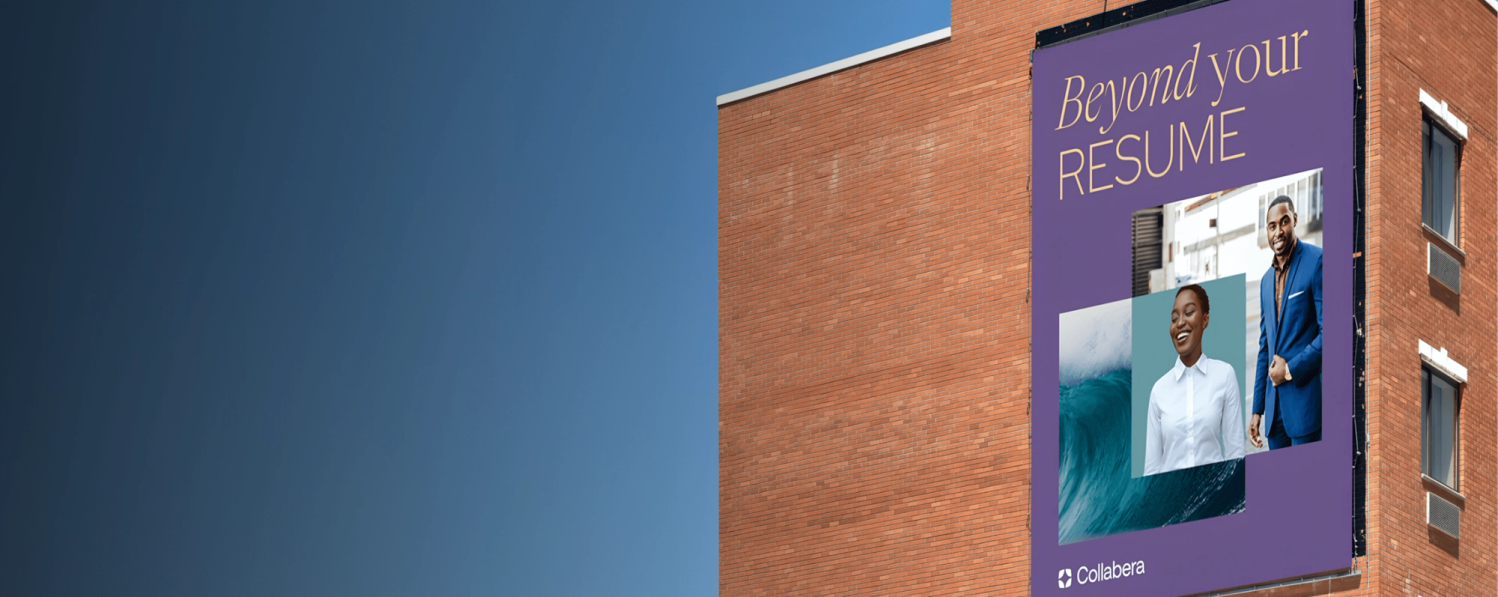
Startups face the perpetual challenge of building a solid foundation for scalable growth, with marketing and design playing a crucial role. Strong design is essential for creating a memorable brand identity, ensuring consistency and credibility, and emotionally connecting with customers. But don't take my word for it—read on for examples of startups that have scaled with effective design and the data to back it up.
Whoever said “The hardest part is starting” never worked at a startup. In a small company, you’re forever starting.
Especially in marketing and design departments, every new day/month/year is a process of building the footing for something stable and scalable. The product or service may already be polished as can be, but creating the groundswell that makes marketing work demands eons-worth of trial and error, failure and success. Start, restart, start again.
For the overwhelming majority of marketers and creatives at startups (save your unicorn dreams), building that foundation means taking a very long road. And yet, there are ways to hit the accelerator that don’t involve waiting for a massive capital injection. Ways that more easily slide a blossoming brand into public view; using the digital-first, visual nature of modern commerce to leave lasting impressions on the right people.
For plenty of ambitious brands, the key to scaling a startup is in strong design.
Why Should Startups Focus On Design?
The thing you’re reading this on is the place most prospects will come into contact with your startup. Building an audience online—however niche or large—is critical for scaling a business. And building an audience starts with attracting a significant number of the right eyes.
A solid creative marketing strategy is how businesses do this. Marketing assets have to be 1) attention-grabbing, 2) varied, and 3) produced and released consistently for a startup to attract and retain an audience. The exceptions to this rule are rare. Pumping out marketing materials that delight with great frequency is how anyone builds an audience these days.
If a startup wants to make that long road forward noticeably shorter, putting their eye on distinctive and frequent brand material is essential.
Scaling vs. Growing a Startup
Let’s nip this in the bud now. Despite their near-identical textbook definitions, growing and scaling a startup are not the same thing. Growing a startup and scaling a startup are both critical chapters in the story of a young company, but each has its unique challenges and goals. Let’s make sure you know where you stand.
Growing a startup
In the early stages of a startup, the focus is primarily on growth. In essence, it’s making damn sure there’s actually a business to start with. If you’re reading this, there’s a decent chance you’re past this stage. Here’s what growing a startup looks like.
- Your resources are limited. Startups often begin with tight budgets and a small team.
- You’re finding product-market fit. Knowing where your product or service fits into your prospects’ lives takes a while. So does knowing how you’re different from your competition.
- You focus on niche or local markets. Growing startups often target local or niche markets to build a loyal customer base.
- You’ve got an “all hands on deck” approach. In this phase, founders are deeply involved in all aspects of the business, including design. They may even wear multiple hats, taking on responsibilities for branding, web design and marketing materials.
Scaling a startup
A startup that’s actively scaling is well aware of its commercial viability. The business’ framework is already set—it just needs to be expanded to reach a wider audience. More to it, it needs the resources to ensure expansion happens consistently, and without major issue. In a scaling startup…
- You have more resources. Scaling startups often secure more significant funding and resources.
- Your business model is proven. At this stage, the startup has validated its product-market fit and business model.
- You’re looking at bigger markets. Scaling startups aim to expand into broader markets, possibly going global.
- You wear fewer hats. As the startup grows, founders transition from hands-on roles to strategic leadership and bring in departmental leaders, like a Head of Marketing and Creative Director.
How Design Scales Startups
The digital market—heck, the market in general—is cutthroat. The latest startup statistics indicate a high mortality rate. It’s a nonstop battle for attention, and having a great service or product is no guarantee of attention.
That’s what makes a strong design system so important. It’s not just about the aesthetics; which font looks the prettiest, or which color the CTA should be. Leading with design is a strategic approach that can make or break a startup's ability to expand into new markets. Here’s how design takes startups to the next level.
1. It Creates a Memorable Brand Identity
Pumping out distinctive marketing content is the edge you give yourself over your dozens, maybe hundreds of competitors aiming for the same audience. It’s one of few things that sticks in a prospect’s mind after they’ve moved on to their next task.
A startup's brand is more than just a logo. Design quickly communicates the values, mission and unique story that your prospects don’t know anything about yet. An appealing and distinctive brand identity helps a startup stand out in a crowded marketplace, making it more memorable to potential customers.
This recognition is essential for building trust and customer loyalty, both of which are critical for sustainable growth, which is why we spoke with marketing and creative leaders at Vimeo and Oyster to find a way through the noise.
2. It Builds Consistency and Credibility
Startups often find themselves in the challenging position of competing with more established players. An attractive and consistent design across all touchpoints builds trust and credibility, whether it's your website, marketing materials or product packaging. When your visual identity is cohesive, it signals your business is professional, reliable, and has the resources and commitment to maintain a strong image.
It’s also more than just making sure the logo looks good on your phone. Every bit or marketing has to have a uniform “feel” to it. Many startups overlook this in their marketing content, and break immersion when the prospect encounters an off-brand or poorly formatted piece of content in your cross-channel marketing.
It sounds harsh, but it’s the truth: Digital consumers (your targets) lose interest quickly when something feels off to them. They’re saturated with information, and instinctively waiting for a reason to back out. Suffice to say, trust is a valuable asset new players can’t afford to overlook, especially when attempting to scale operations and attract larger clients or investors.
3. It Attracts Prospects
We’d be lying if we didn’t admit design is at least a little bit about looking attractive. Effective marketing design not only makes your business look good, but also makes it sell better. In fact, McKinsey found design-led businesses increase revenue at nearly twice the rate of competitors.
It’s no secret we tend to buy pretty things, whatever our definition of “pretty” is in any given context. If a cybersecurity firm is able to convey a sense of…well…security in its branding, they’ve got a far better shot at standing out to prospects in the market for such a solution when the time comes. Same for the tech company hoping to present itself as disruptive. Same for the wellness company presenting itself as conscientious.
This is where many startups slip up, though. Their brand may be doing a perfectly fine job embodying whichever value they subscribe to, but still be visually indistinct from others in their sector. This is a delicate dance, and it’s why great design is so key to scaling. For startups, brand distinction depends not just on telling the story, but on telling it in a unique way.
4. It Introduces Emotion
Startups often have a unique narrative or value proposition that sets them apart from the competition. And even if it’s a subtle one, strong marketing design means sussing it out and including it where appropriate.
Thoughtful brand storytelling is what makes customers connect with your brand on a personal level. Where the interaction between startup and prospect is often dry and transactional, design has the ability to speak to them on a deeper level—something other facets of your business probably can’t do. This emotional connection can be a huge motivator for customers to choose your products or services over those of your competitors.
Look at it this way: Great design informs storytelling by marrying your solution (what you do) with what your audience needs most (how they feel). The space in between is where your startup's ideal branding lies, and where it's most likely to connect with your prospects.
6. It Increases Capacity—When Done Right
As a startup scales its operations, capacity becomes a top concern. Creative design plays a pivotal role in this aspect, specifically in the form of design operations (“DesignOps”).
A well-thought-out design system ensures marketing materials and resources can be quickly and efficiently produced as a startup expands. With the proper processes and talent/capabilities in place, creative and creative iterations are always available for testing in new markets.
To learn more about how DesignOps can help your startup scale, check out the video below.
Scalability in design allows for the adaptation of existing design elements to suit the specific requirements of new ventures or products, saving time and resources in the long run.
8. It Refines Your Marketing Strategy
In the digital age, creative design is also a powerful data collection tool. Startups specifically can use things like ad performance and A-B testing to refine their design and overall messaging strategy continuously. Reliably having creative at your fingertips means learning in real-time what parts of your marketing strategy are working, and what’s not.
This data-driven approach means you can adapt to your audience's preferences, adjust your visuals (and perhaps even marketing copy) to maximize engagement and boost conversion rates.
Good design isn’t a shot in the dark, but a precise and calculated effort to design materials that pique your prospect's interest, and prompt them to investigate further.
Examples of Startups Who Scaled With Design
As we've seen, strong design is critical for marketing at the startup stage. Despite the huge challenges many of these startups and once-startups faced, all leveraged design to drive significant marketing outcomes.
Doodle Labs
It took a lackluster industry trade show to convince Doodle Labs’ VP of Marketing they couldn’t scale the company without scaling their brand. After a rebrand, however, the wireless networking startup reported a 20% increase in conversion rate on their website.
A showcase of pages from the Doodle Labs brand guidelines.
With their brand now prominent in their market, the team at Doodle Labs have successfully transformed their marketing performance and solidified a foundation for scale. And it's no wonder their performance saw a boost with neat 3D demo videos like this one:
Jasper
Near the forefront of the conversation around AI in marketing, Y Combinator startup Jasper needed branding that could help them standout among the multitude of AI-centered businesses. From the beginning, they got this right and developed a brand that attracted “superfans:” Users who’d tattooed the startup’s distinctive logo on their shin.
Though the company has since changed its name from Jarvis to Jasper (yes, Marvel Studios demanded it), fans remain staunch in their support. They kind of have to now, don’t they?
Brio Systems
In the chaos of the recent pandemic, healthcare startup Brio saw a chance to use their expertise to fill the gap for COVID testing solutions. Design’s mission was to build trust amidst widespread skepticism in the health industry.
With few resources and next to no time to do so, Brio worked with Superside to implement a new brand, design a new website, and refresh packaging and marketing materials to quickly scale across the US.
Zapier
Even a Y Combinator startup doesn’t get to work with OpenAI if their branding doesn’t compute. The online automation startup has transformed itself into a giant in integration tech, and have clearly leaned on design to help them reach new heights.
One need only look to their brand page to understand just how seriously the once-humble startup takes their aesthetic.
Packt
Publishing startup Packt fills the gap between IT software's intended use and its real-world application. Such a refined message called for refined branding—but the reliance on slow agencies for tackling creative overflow was making scale difficult at the time.
Superside helped develop a robust design system for Packt, enabling creative speed and scale. Now, high quality, brand-aligned creative comes in fast, meaning Packt is always ready to hit the market.
AEI Consultants
You know it well: Many startups’ design teams are lean. Environmental service provider AEI Consultants’ design team was a one-person operation. And impressive though it was, having just one designer is not a recipe for scale.
But with a partner like Superside who can easily take on a myriad of design requests, they’re managing to scale in the face of market uncertainty, and have yet to hire even one more designer.
Kins
Fitness is an intimidating space, as physical therapy startup Kins learned. Especially with the company’s forward-thinking business model, presenting the idea to a larger market meant design had a lot of legwork to do. But on the brand’s lean marketing team, scale wouldn’t happen without support.
After working with Superside to create a strong design system, however, a startup whose Growth Lead once worried the brand was coming off as “fake” boasted 200% increases in CTR, and a cost-per-result that’d dropped by 20-40%.
Strong Branding Makes for Strong Brands
Scaling is difficult as it is. What’s more, most startups don’t yet have the resources or capacity to deliver engaging creative materials quickly enough to move the needle for marketing.
Enter Creative-as-a-Service (CaaS). CaaS is what many startups lean on to help creative and marketing teams make a difference. Faster and more reliable than traditional agencies, CaaS leverages expert, dedicated design teams that work closely with startups to bring their vision to life while they focus on growing the business.
Starting is hard enough. Compelling design from an always-on team of veteran design pros makes it much easier. By harnessing the power of design, startups can craft their own narrative, capture the hearts and minds of customers, and chart a path toward lasting success.
















